
Almond Trees and Bees Deserve Cover Crops!
by CRARS staff member Sheryl Karas. M.A.
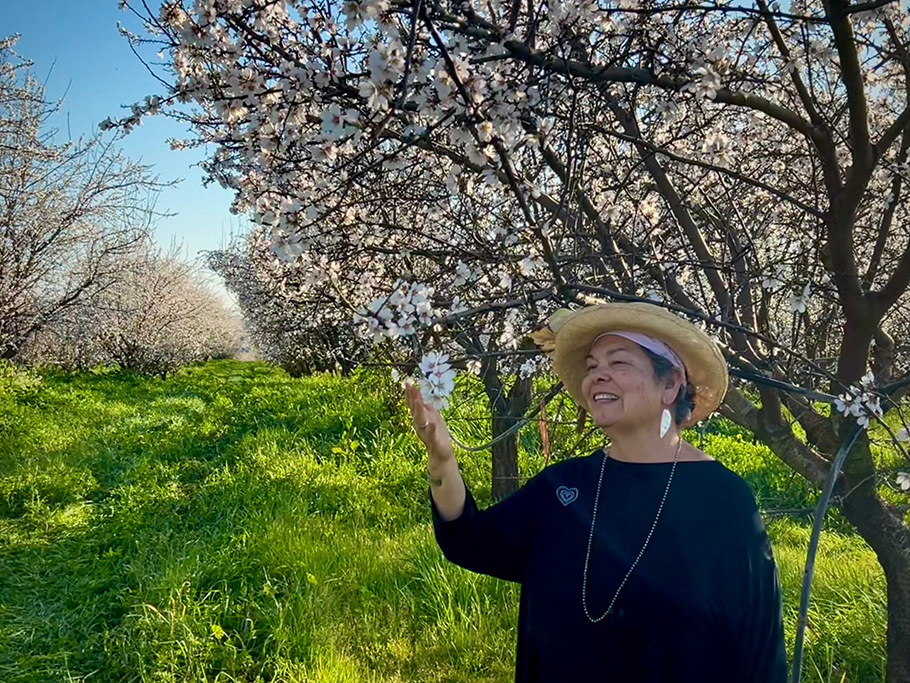
Rosie Burroughs with regenerative almonds at Burroughs Family Farms
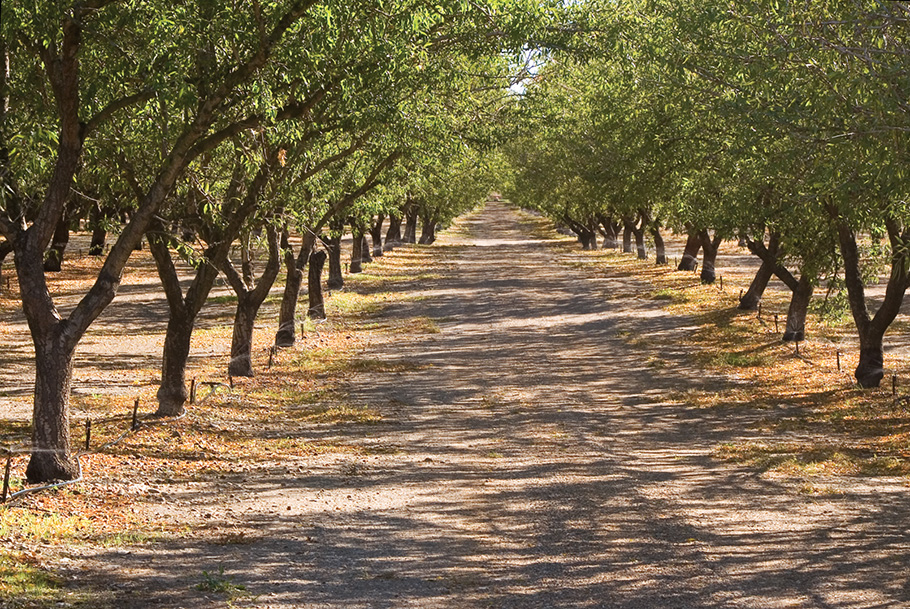 If you visit an almond orchard almost anywhere in northern California, you’ll see neat rows of trees surrounded by bare soil. That’s by design. Conventional practice in the industry is to shake the trees at harvest and let the nuts fall to the ground where they sit for 5-10 days to dry. A machine is then used to sweep the nuts into windrows, and a second machine is used to collect and transport them to a facility that removes the shells and gets them ready for further processing. A certain amount of ground debris is sorted out at processing, but the intention is to avoid that as much as possible.
If you visit an almond orchard almost anywhere in northern California, you’ll see neat rows of trees surrounded by bare soil. That’s by design. Conventional practice in the industry is to shake the trees at harvest and let the nuts fall to the ground where they sit for 5-10 days to dry. A machine is then used to sweep the nuts into windrows, and a second machine is used to collect and transport them to a facility that removes the shells and gets them ready for further processing. A certain amount of ground debris is sorted out at processing, but the intention is to avoid that as much as possible.
This used to be considered best practice. However, when it rains, water droplets hit the soil surface forming an impermeable cap, forcing the water to run off the orchard floor taking sediment and other inputs with it. Rainwater runoff represents a missed opportunity and when water is in such short supply, it's an inefficiency that we can't afford. The extended drought conditions have forced California farmers to reduce their water use by 33% in recent years, which they have done by using very efficient "water-on-demand" micro-irrigation technology. That’s an excellent example of innovative choices that make a significant difference in the face of changing weather patterns. And yet, here and there you can find regenerative almond growers choosing a very different approach—one that uses no more water and saves them so much money in the long run that they eventually see twice as much profit(opens in new window) than conventional growers!
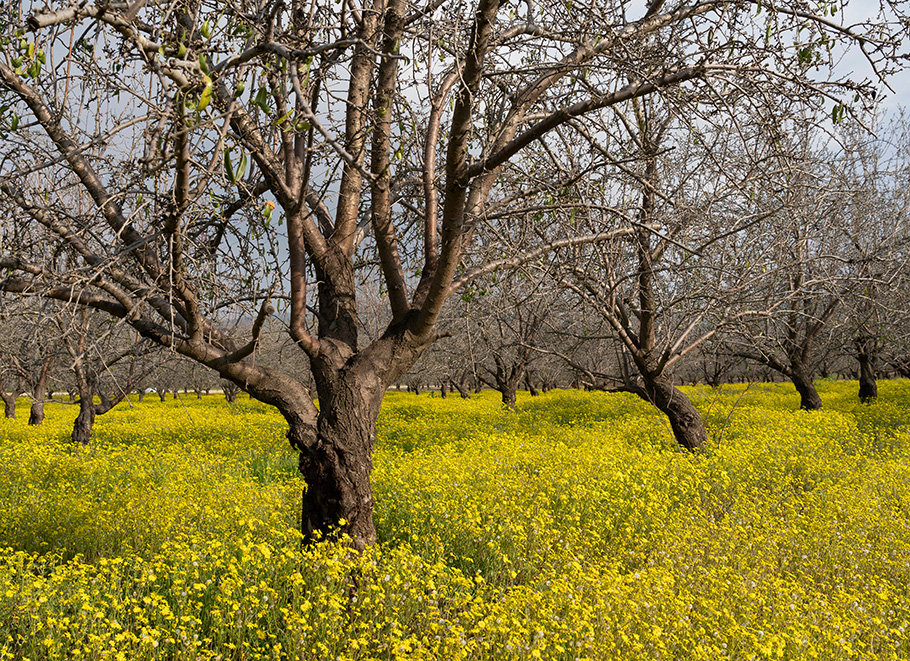 A fully regenerative almond orchard looks very different than most conventional ones—a person might even criticize it for looking messy. Cover crops grow beneath the trees or in rows between them. The vegetation might be mowed and removed in some fields before harvest, but new catch-frame technology makes it unnecessary to allow the nuts to fall to the ground, in which case the ground can be kept covered through the hot summer months. It also reduces the number of times machinery passes over the land (reducing soil compaction, fuel use and emissions).
A fully regenerative almond orchard looks very different than most conventional ones—a person might even criticize it for looking messy. Cover crops grow beneath the trees or in rows between them. The vegetation might be mowed and removed in some fields before harvest, but new catch-frame technology makes it unnecessary to allow the nuts to fall to the ground, in which case the ground can be kept covered through the hot summer months. It also reduces the number of times machinery passes over the land (reducing soil compaction, fuel use and emissions).
Conventional growers are horrified at the thought of cover crops taking precious water. But a new three-year study (PDF) from UC Davis shows that growing winter cover crops uses no more water than the normal irrigation growers already use and provides several helpful benefits that make it worth the investment. Those include less soil compaction(opens in new window), better water infiltration (where it can recharge depleted ground water), less water run-off and evaporation, increased soil organic matter that holds more water over time, reduced soil erosion and nutrient losses, and overall improved soil health. Over time, depending on what cover crops and other regenerative practices are used, enough nutrients can be added to the soil that expensive fertilizer use can be greatly reduced. The best results are seen using multi-species cover crops with low or no-tilling, and the addition of either animal impact (for grazing the cover crops and adding manure) or added compost and mulch. Bee-friendly cover crops are especially recommended.
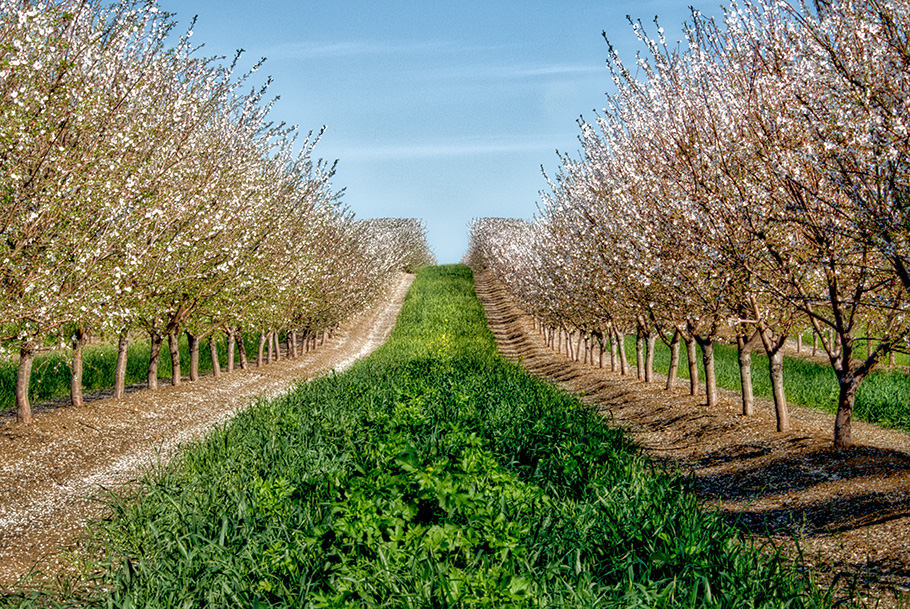
Planting for Bees
Almond growers depend on bees and other pollinators so much that 72% in a recent survey(opens in new window) said they rent bee colonies to be brought in to pollinate their crop. This is done at significant expense to the growers who also have reason to be concerned about declining health and abundance of the bee colonies(opens in new window) themselves. About 38% of almond growers surveyed are interested in creating bee habitat and 19% already grow hedgerows, riparian strips and flowers for pollinators around the outside of their orchards and want to add more. However, because cover crops can serve multiple purposes in addition to providing bee habitat, 51% grow or are interested in growing cover crops and 35% already do. It’s just more cost efficient and possibly more effective grown between rows of trees than around the edges alone.
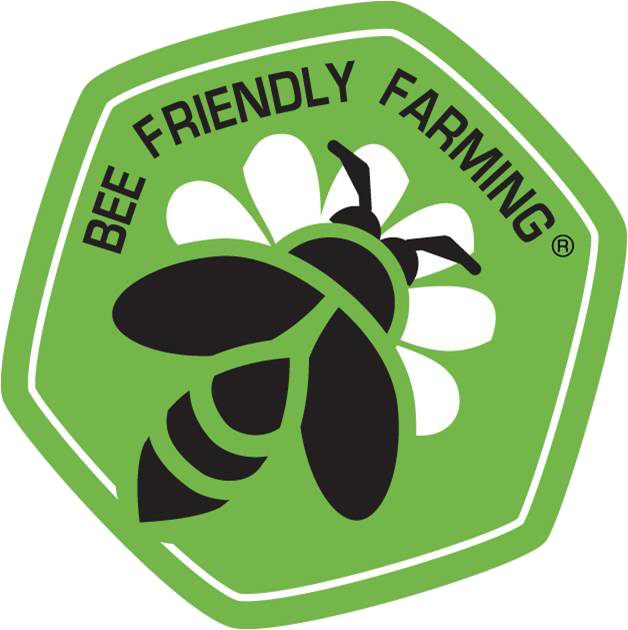 To encourage almond growers in these efforts, the Almond Board of California partners with Project Apis m.(opens in new window) and their Seeds for Bees program to help provide scholarships for almond growers who add bee-friendly cover crops(opens in new window). They also have aligned with the Pollinator Partnership’s Bee Friendly Farming program to create a Bee-Friendly Farming certification program(opens in new window) using assessments specifically focused on bee health and pest management. Criteria include:
To encourage almond growers in these efforts, the Almond Board of California partners with Project Apis m.(opens in new window) and their Seeds for Bees program to help provide scholarships for almond growers who add bee-friendly cover crops(opens in new window). They also have aligned with the Pollinator Partnership’s Bee Friendly Farming program to create a Bee-Friendly Farming certification program(opens in new window) using assessments specifically focused on bee health and pest management. Criteria include:
- Providing pollinator forage all year on at least 3% of the land in or near orchards, including cover crops if they are left to bloom.
- Providing bloom of different flowering plants throughout the growing season.
- Offering clean water for pollinators if not inhibited by government-mandated water restrictions.
- Providing permanent habitat for nesting via hedgerows, natural brush, etc.
- Practicing integrated pest management and reducing or eliminating the use of chemicals.
74% of growers said they are interested in being certified as bee-friendly growers. The program provides support in the process of choosing and implementing effective practices and allows certified growers to display the Bee-Friendly logo on their products.
All of this bodes well for expansion of regenerative practices that will improve soil health and aid in atmospheric carbon drawdown and accrual in the soil as well.
Learn more about pollinator-specific cover cropping (PDF) from Xerces.org.
Learn about cover cropping for all purposes(opens in new window) at the Center for Regenerative Agriculture and Resilient Systems.
